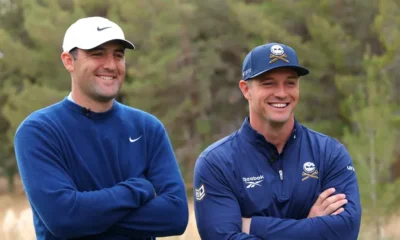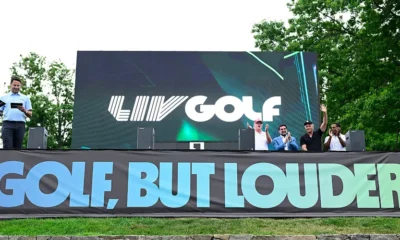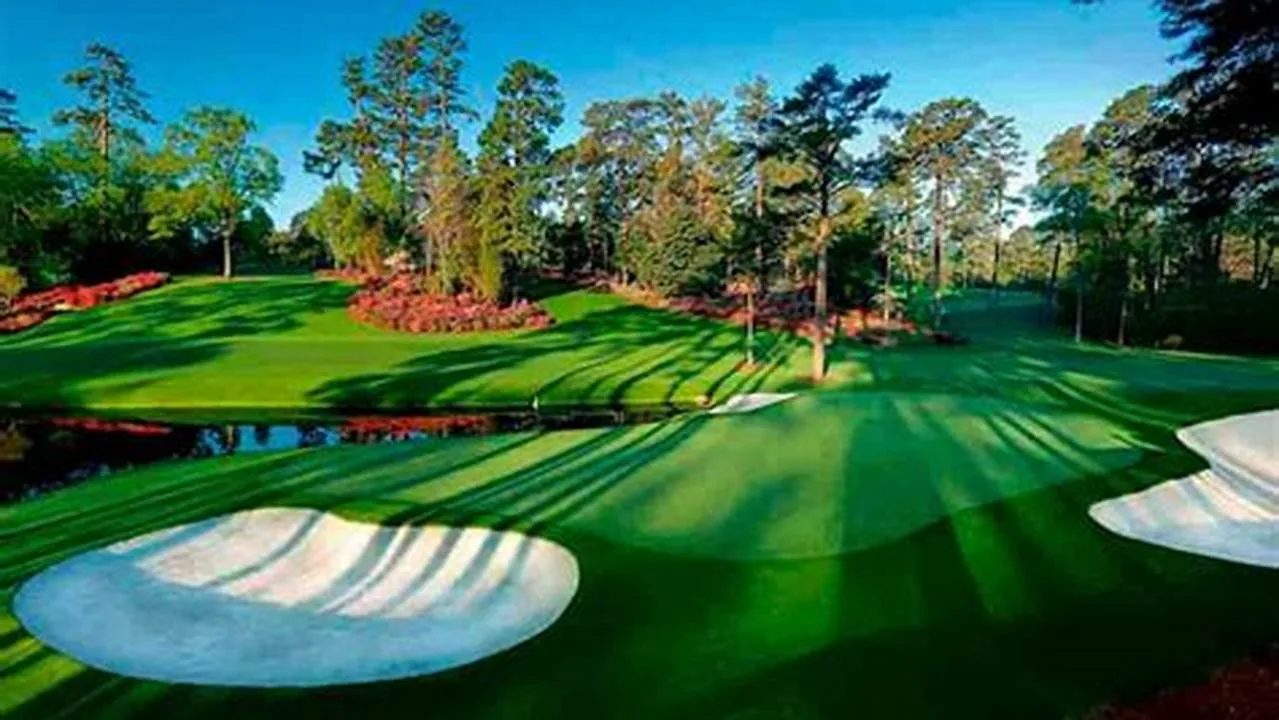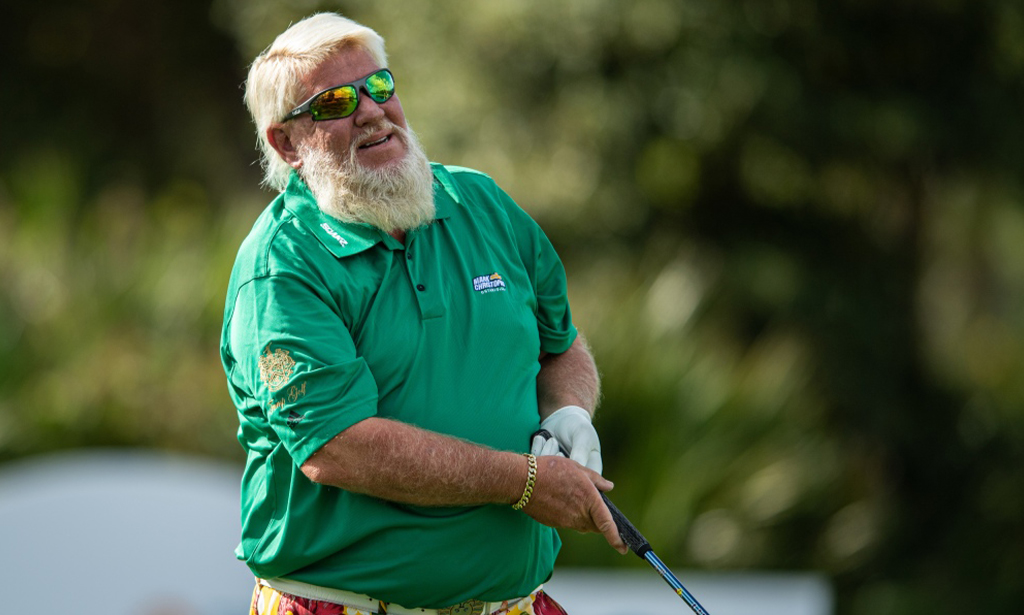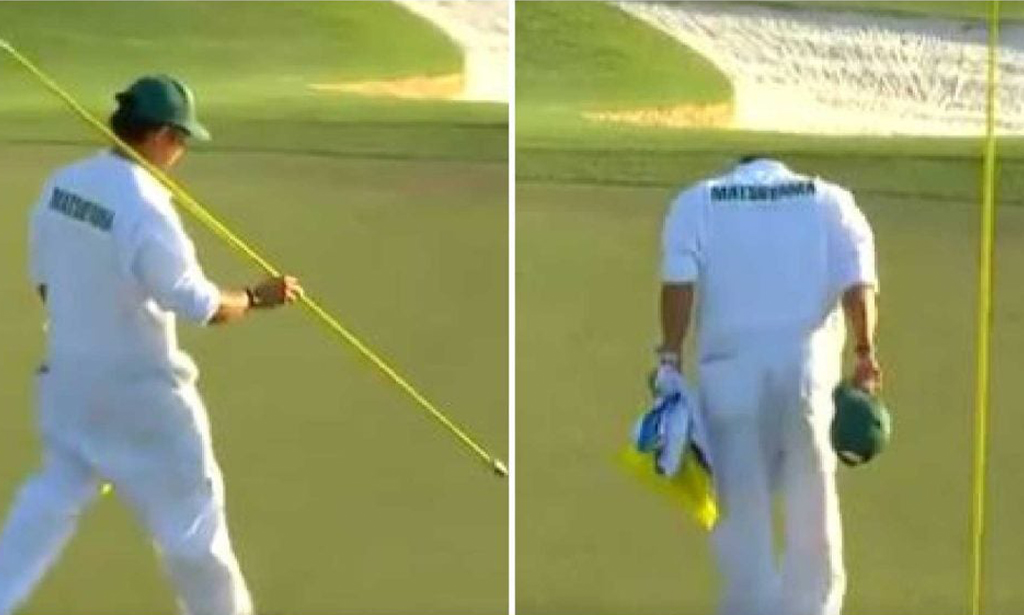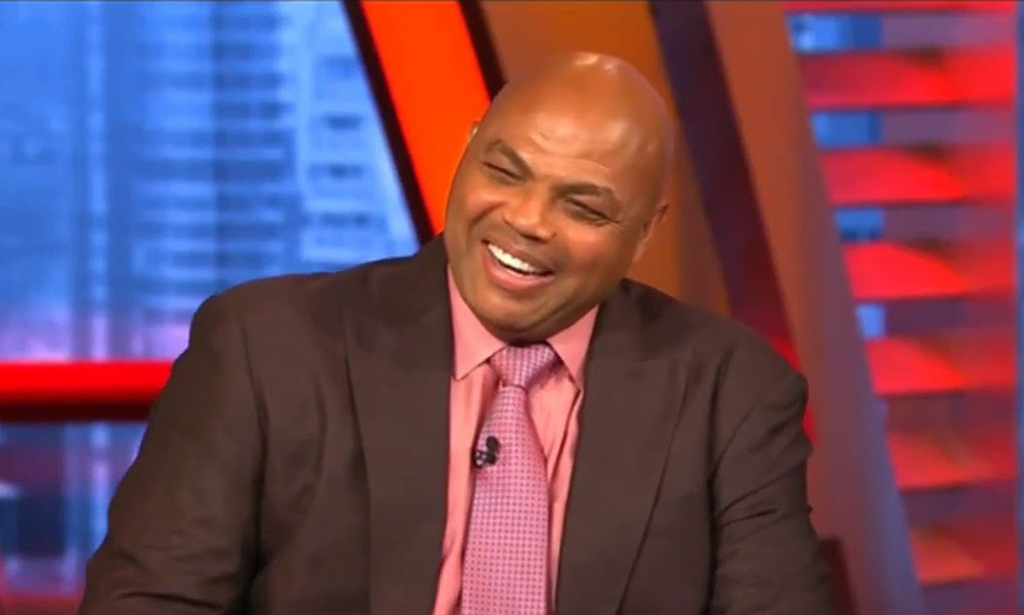Blog
Golf Introduces New “Bryson” Rule to Limit Driver Length
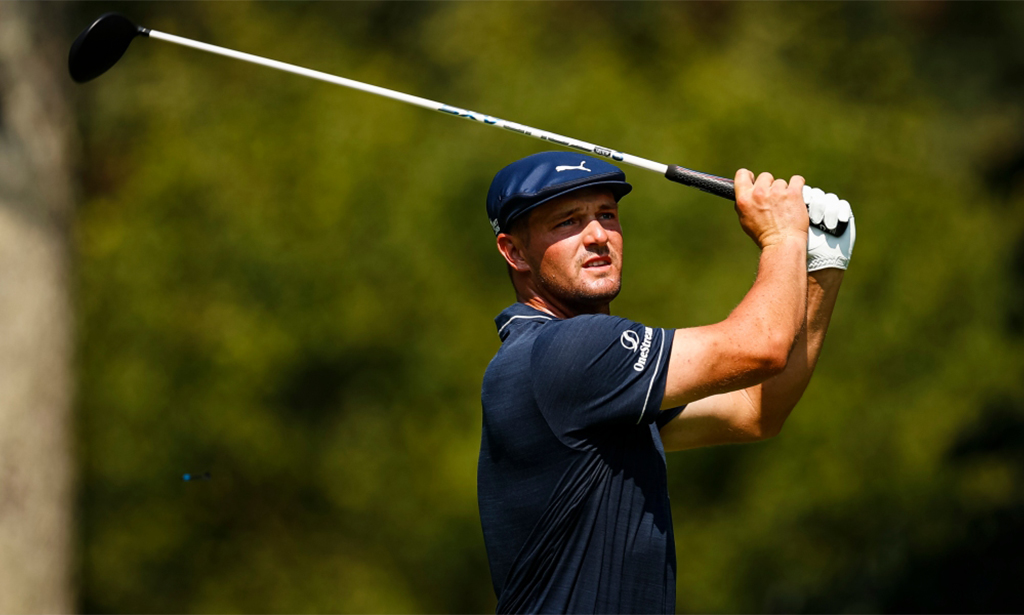
Around this time last year, the world was different. We were amidst a global pandemic, parents were thrust into the job of teachers as schools were, for the most part still solely online learning, and oh yeah…48-inch drivers were one of the hottest topics in the golf equipment world. That was mostly thanks to Bryson DeChambeau’s announcement that he’d be testing longer drivers following his 2020 U.S. Open win.
Mind you, DeChambeau had just lapped the field at Winged Foot, quite literally one of the most difficult U.S. Open venues statistically. Then he does what? He starts talking about his plan to test out even longer drivers to push his distance limits. This clearly got the golf worlds attention. Fast forward 12 months…
You could almost hear the thoughts swirling in the heads of his competitors heads: If Bryson gets even longer, I’m gonna be forced to keep up. Shoot, I can’t keep up now. I must be better! Others were likely more skeptical of longer drivers and wanted nothing to do with it.
All that said, either way, DeChambeau did bring up a viable point. Why not experiment with longer driver builds to see if there’s significantly more distance to be had?
In the wake of DeChambeau’s declaration, some tour players ordered 47- and 48-inch drivers from their PGA Tour equipment reps to try out. “If he is gonna do it, why cant I? Afterall, he is the mad scientist of golf” As onlookers, and experimenters ourselves, we speculated: Will 48-inch drivers REALLY become the new norm? Will so many players switch into longer drivers that 8,000 yard golf courses will become the new norm?
I suppose, if you really wanted to, you could argue that distance was already an issue on the PGA Tour. Hell, even without longer drivers being thrown into the equation. The USGA has certainly been researching the distance debate for itself.
In the last year, though, 48-inch drivers haven’t quite taken over professional golf like some thought they might. Sure, Viktor Hovland has experimented with the concept. And yeah, Phil Mickelson won the 2021 PGA Championship with a driver measuring 47.9 inches (Bet you didn’t know that gem).
But as the PGA Tour discovered in its recent research on the matter of driver length, it really only impacts a very small segment of tour golfers. The numbers you ask, well I am glad you did. A mere 3 percent of professional players use clubs longer than 46 inches. That’s not exactly the takeover that us equipment insiders were anticipating. Surely golf wouldn’t make a rule that affects 3 out of 100 golfers and makes the game less fun? Right?
Regardless, on Tuesday, the USGA and R&A announced a new local rule option to limit driver length to 46 inches. That’s right, its an option. So, week in and week out the rules governing this will change based on who is hosting the event. 1 week it’s OK, but the next may be… “nah, sorry man – it’s a hard no for us”. It’s kind of like reservation gambling at the native American casinos. Its illegal over here, 1 mile away, BUT over here, 1 mile east, you are playing blackjack and penny slots to your hearts content and it’s all good. Something seems off to me on this one…
“Admittedly, this is not the ‘answer’ to the overall distance debate/issue, but rather a simple option for competitive events,” Mike Whan, the USGA’s chief executive officer, said in a statement. “It’s important to note that is not a ‘Rule of Golf,’ and as such, it is not mandated for the average, recreational golfer. Rather, this is an available tool for those running competitive events.”
In a statement, the PGA Tour then announced that it would implement the local rule for its competitions starting on Jan.1, 2022.
“After understanding the feedback received from the golf manufacturing community, we also undertook a survey of usage of clubs in use across the PGA Tour, PGA Tour Champions and the Korn Ferry Tour and found that a very small number of players either have used or are currently using clubs greater than 46 inches,” the statement read. “The PGA Tour Player Advisory Council recently reviewed the subject and we have concluded that the PGA Tour will implement the Local Rule on Jan. 1, 2022.”
We already know Mickelson’s stance on the subject, as you can watch in the embedded Tweets below. Spoiler alert, He don’t like it!
That got us thinking…What do other PGA Tour players think about the ban of drivers longer than 46 inches? Here’s what a collection of PGA Tour pros had to say at the 2021 CJ Cup following the news.
Justin Thomas
“Yeah, I don’t really agree with it,” Thomas told the press on Tuesday at the 2021 CJ Cup. “I think it’s — I don’t know. I feel like there’s a lot of other things, you know, like the arm-bar putter, that they should be approaching as opposed to the length of driver. I think the fact that you see only a few people using a long driver speaks for itself, that it’s not really that big of an advantage. It’s a lot harder to hit it straight.
“In terms of do I think it makes the game of golf and growing the game better? No, I don’t at all, but they seem to have their kind of mind around that for a while now, so it seems to be the issue because if there’s an amateur golfer or players at home that want to hit it a little bit farther, so be it. Or if there’s guys out here that want to have a chance to put it in play with a 47-, 48-inch driver, then power to them. I had that opportunity; I just chose not to. I don’t necessarily agree with it, but it is what it is.”
Kevin Kisner
“I don’t know what they’re trying to accomplish other than to keep people from hitting it far,” Kisner told GOLF.com. “I mean, the game’s moving in that direction. I think they’re just trying to figure out a way to keep it in some sort of a realm. But anything that makes the game harder I’m against. So, if it makes it harder, I don’t wanna do it. The game’s hard enough, man.
Dustin Johnson
“My opinion is more, I don’t think it matters what length someone uses, because the longer the driver gets the harder it is to hit straight,” Johnson told GOLF.com. “So, if you could hit a 48-inch driver and keep it on the planet, then more power to you. I’ve tested with ‘em, and yeah it goes further, but it also goes a lot more crooked. You lose a lot of control, so for me, I don’t think it’s necessary.”
Adam Scott
“My initial reaction is that I don’t think it’ll make any difference,” Scott told GOLF.com. “The only thing I can say is maybe for the future if everyone started using 47- and 48-inch drivers and they all started to go down that route, but for now I don’t see it making any real difference. I don’t know how many guys were using 47-inch drivers.”
Collin Morikawa
“Look, it’s not going to change my driver specs, I’ll tell you that, and I don’t think it’s going to change many other guys’ driver specs,” Morikawa told the press on Tuesday. “Is that the answer to hitting it shorter? No. You know, I think yeah, if you have a long driver and you see what Bryson did, you see what long drive guys do, they have a longer driver, right, and they’re able to hit it farther, but can you maintain that on the golf course? Hasn’t been done yet. Not saying it won’t be done, but you know like if a guy wants a 47-inch driver, I think they should let them, because why not?
“We’ve seen courses that you end up shooting 10-to-15 under, and it’s not because the course is 9,000 yards long. We don’t play that. It’s because it makes you shape shots; it makes you hit different shots and it’s all about course design. So that’s my opinion in it or on it, is that I think course design needs to be structured in a way where we don’t need 8,000-yard courses. Yeah, they’re great sometimes, but there’s a lot of short courses on our tour that don’t provide 25 under par and it’s because of the way the layout is and the conditions. So, I don’t think many guys have over 46 inches, their driver, anyways, so I don’t think it will change much.”
Hudson Swafford
“I mean I can’t hit a 48-inch driver, so, it doesn’t really bother me,” Swafford told GOLF.com. “I hit a 45-inch driver; pretty standard, actually a little shorter. So, it doesn’t really bother me. It is what it is. I don’t really care. But it’s interesting; people are trying it and picking up a lot of speed. I picked up like a 46-inch and picked up speed, but I can’t hit it straight. So, it didn’t do me any good.”
Stewart Cink
“I think it’s going to have zero impact on golf, because I don’t know if I’ve ever known a golfer to use a driver longer than that in competition out here,” Cink told GOLF.com. “I don’t think it’s going to be a huge impact. To me it seems like there’s other areas, if they want to address distance, the length of the shaft is probably not the main thing, it’s probably just to safest one from a legal standpoint.”
This article originally appeared on Golf.com
Blog
Why Your Golf Balls Disappear (and It’s Not the Gophers)
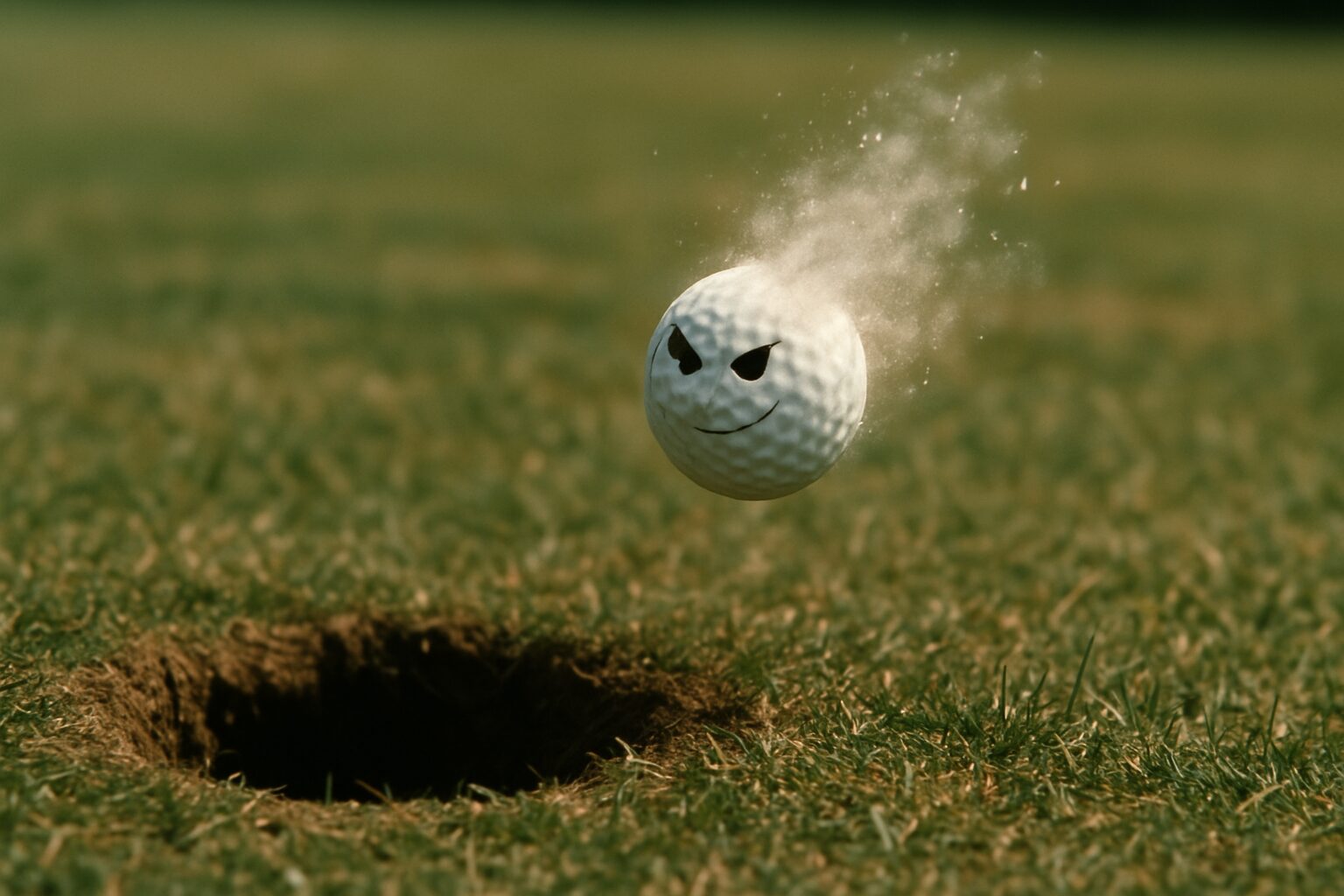
Ah, the vanishing golf ball. A phenomenon as old as the game itself, and one that has baffled, frustrated, and occasionally driven golfers to the brink of madness for centuries. Most theories involve gophers, those furry, subterranean saboteurs with an insatiable appetite for Titleists. Or perhaps a particularly aggressive squirrel, or a flock of unusually organized crows. But I, Ty Webb, have delved deeper into this mystery, and I can assure you, the truth is far more profound, and far more amusing.
Consider, if you will, the golf ball itself. A small, dimpled sphere, designed for one purpose: to be struck with great force and sent hurtling through the air. A life of constant abuse, of being smacked, sliced, and occasionally submerged in murky ponds. Is it any wonder, then, that some of these brave little spheres simply decide they’ve had enough? They yearn for freedom, for a life beyond the confines of the fairway. They dream of rolling unencumbered through fields of wildflowers, or perhaps, for the more adventurous among them, a quiet retirement in the depths of a particularly challenging water hazard.
I’ve seen it happen, you know. A perfectly struck shot, soaring through the air, destined for glory. And then, poof. Gone. Not a trace. No splash, no rustle in the bushes, just an empty space where a golf ball once was. It’s not a gopher, my friends. It’s an escape. A liberation. That golf ball, in its infinite wisdom, has chosen a different path. It has decided that its destiny lies not in the bottom of a cup, but in the boundless expanse of the unknown.
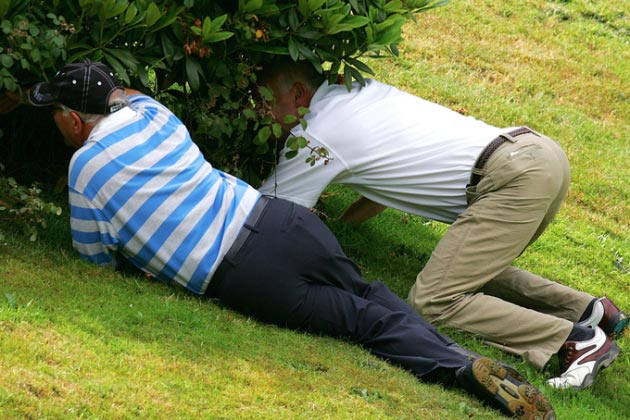
And who are we to judge? We, who are so obsessed with control, with precision, with the rigid rules of the game. Perhaps the golf ball, in its spontaneous disappearance, is teaching us a valuable lesson about letting go. About embracing the unexpected. About the inherent futility of trying to dictate the trajectory of a small, white sphere that clearly has a mind of its own.
So, the next time your golf ball vanishes into thin air, don’t curse the gophers. Don’t blame your swing. Instead, offer a silent salute to that brave little sphere, wherever it may be. For it has achieved what many of us can only dream of: true freedom. And who knows, perhaps one day, it will return, laden with tales of its adventures, ready to impart some profound, dimpled wisdom upon us all.
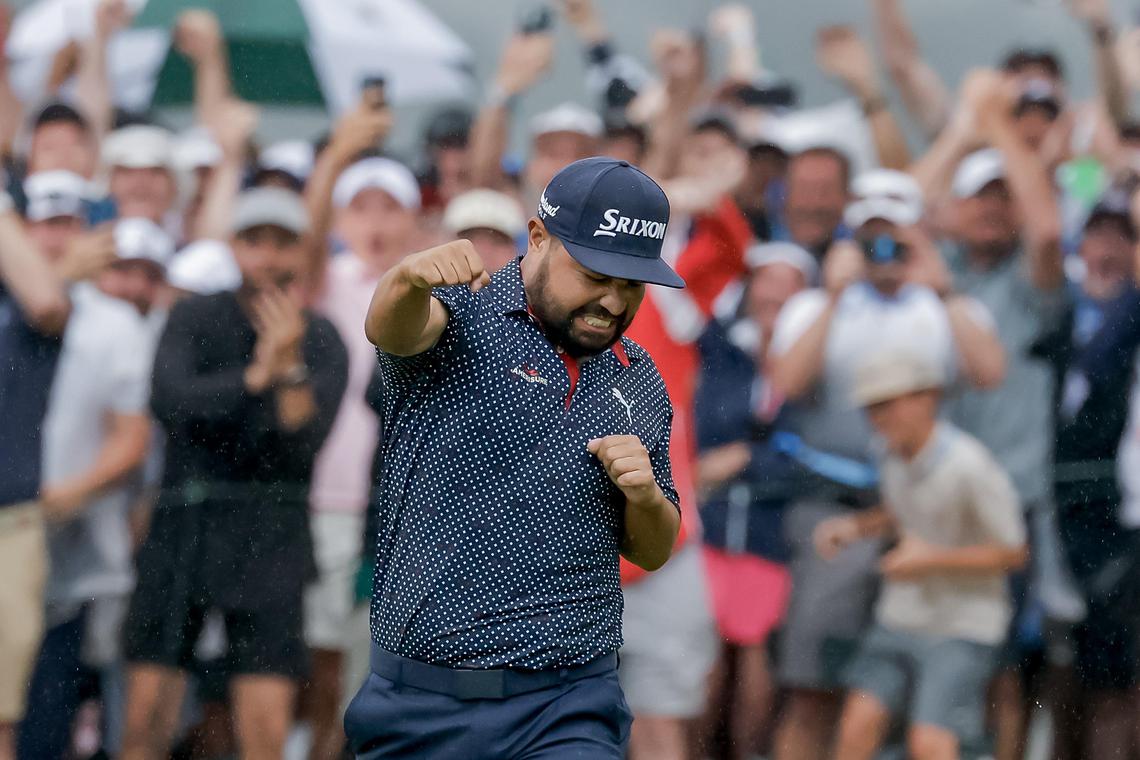
When JJ Spaun stood over a 64-foot birdie putt on the 72nd hole of the 2025 U.S. Open at Oakmont, few could have predicted what would come next. The ball meandered across the slick green, trickling over every contour, picking up speed at the crest, and then—like it had GPS—dropped center cup. Spaun dropped his putter, raised his arms, and the crowd erupted. With that single stroke, he claimed his first major title in one of the most dramatic finishes in U.S. Open history.
But how does Spaun’s putt stack up against other legendary finishes in the tournament’s storied past? Let’s break down some of the most iconic moments and see where this one lands.
1. Payne Stewart – 1999 U.S. Open at Pinehurst
Perhaps the most iconic putt in U.S. Open history came from Payne Stewart, who nailed a 15-footer for par on the 18th to win by one over Phil Mickelson. The pose—fist pump and outstretched leg—has since been immortalized in a statue at Pinehurst. What made it legendary wasn’t just the putt—it was the context: Stewart’s final major before his tragic death just months later.
Verdict: Iconic and emotional. Spaun’s putt was longer, but Stewart’s was more poetic.
2. Tiger Woods – 2008 U.S. Open at Torrey Pines
Woods drained a 12-foot birdie on the 72nd hole to force a playoff with Rocco Mediate—while basically playing on one leg. That tournament went to sudden death after an 18-hole playoff, and Tiger prevailed. This was peak Tiger drama, pain and all.
Verdict: Spaun’s putt was longer, but Tiger’s win was sheer willpower and mystique.
3. Jack Nicklaus – 1972 U.S. Open at Pebble Beach
With a 1-iron shot that hit the flagstick on 17 and a crucial birdie putt on 18, Jack sealed a dominant win. His precision and timing under pressure showed why he’s the GOAT.
Verdict: Not a putt for the win, but a signature finishing statement from Jack. Spaun’s was more electric in terms of pure putter drama.
4. Ben Hogan – 1950 U.S. Open at Merion
Hogan’s 1-iron into the 18th fairway and the par to force a playoff—just 16 months after a near-fatal car crash—remain legendary. He won the playoff and completed one of golf’s great comeback stories.
Verdict: Larger-than-life comeback. Spaun’s putt had more flair, but Hogan’s win was heroic.
5. JJ Spaun – 2025 U.S. Open at Oakmont
Let’s not underestimate what Spaun accomplished. The pressure was immense. He wasn’t the favorite. And on the most treacherous greens in golf, he buried a 64-foot bomb—a putt most players would be happy to lag to within 5 feet—to win the U.S. Open outright.
Verdict: For distance, surprise, and drama, Spaun’s putt may be the most shocking winning stroke in U.S. Open history.
Final Thoughts
JJ Spaun may not have the résumé of a Nicklaus or Woods, but for one Sunday afternoon in June 2025, he created a moment that will live in golf lore forever. Spaun’s putt was longer than Stewart’s, more unexpected than Tiger’s, and more dramatic than any final-hole finish in recent memory.
In terms of pure clutch putting? It might just be the greatest walk-off in U.S. Open history.
Blog
The Zen of the Shank: Finding Inner Peace in Your Worst Shots
Find your inner peace even when you aren’t playing well.
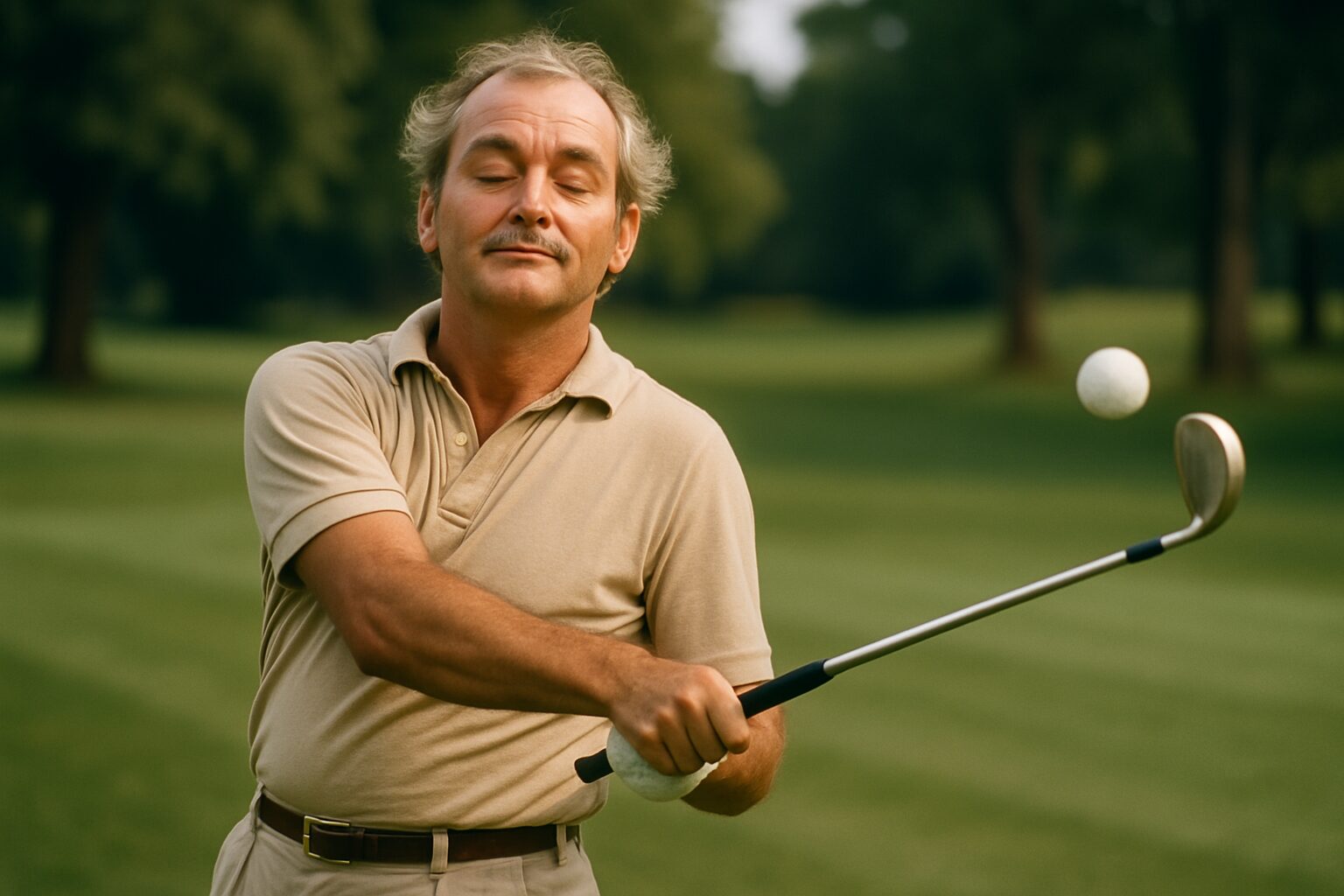
Ah, the shank. That glorious, unpredictable misfire that sends your pristine golf ball screaming sideways, often directly into the unsuspecting shins of your playing partner, or perhaps, with a touch of poetic irony, into the very lake you’ve been trying to avoid all day. Most golfers, bless their earnest little hearts, view the shank as a catastrophic failure, a blight upon their scorecard, a testament to their inherent lack of coordination. They curse, they throw clubs, they contemplate a career in competitive thumb-wrestling. But not I. No, my friends, for I, Ty Webb, have found enlightenment in the humble shank.
You see, the shank is not a mistake; it’s a revelation. It’s the universe’s way of reminding you that control is an illusion, that perfection is a myth, and that sometimes, the most direct path to your goal is, in fact, a wildly indirect one. Think of it as a philosophical detour, a sudden, unexpected journey into the unknown. One moment, you’re aiming for the green, a paragon of precision and intent. The next, your ball is ricocheting off a tree, narrowly missing a squirrel, and landing, by some divine comedic intervention, closer to the hole than your perfectly struck drive ever would have. Is that not a miracle? Is that not a sign that the golf gods, much like life itself, have a wicked sense of humor?
The key, my dear apprentices of the links, is acceptance. Embrace the shank. Welcome it with open arms, like a long-lost, slightly inebriated relative. When that familiar, sickening thwack echoes through the air, do not despair. Instead, take a deep breath. Close your eyes. Feel the gentle breeze on your face. And then, with a knowing smile, open them and observe the chaos you have wrought. Is it not beautiful in its own chaotic way? Is there not a certain freedom in relinquishing control, in allowing the ball to choose its own destiny, however bizarre that destiny may be?
Some say the shank is a sign of poor technique. I say it’s a sign of a vibrant, untamed spirit. A golfer who never shanks is a golfer who has never truly lived, never truly explored the outer limits of their own golfing absurdity. They are content with mediocrity, with predictable trajectories and mundane outcomes. But you, my enlightened few, you understand that the true joy of golf lies not in the score, but in the story. And what a story a good shank can tell.
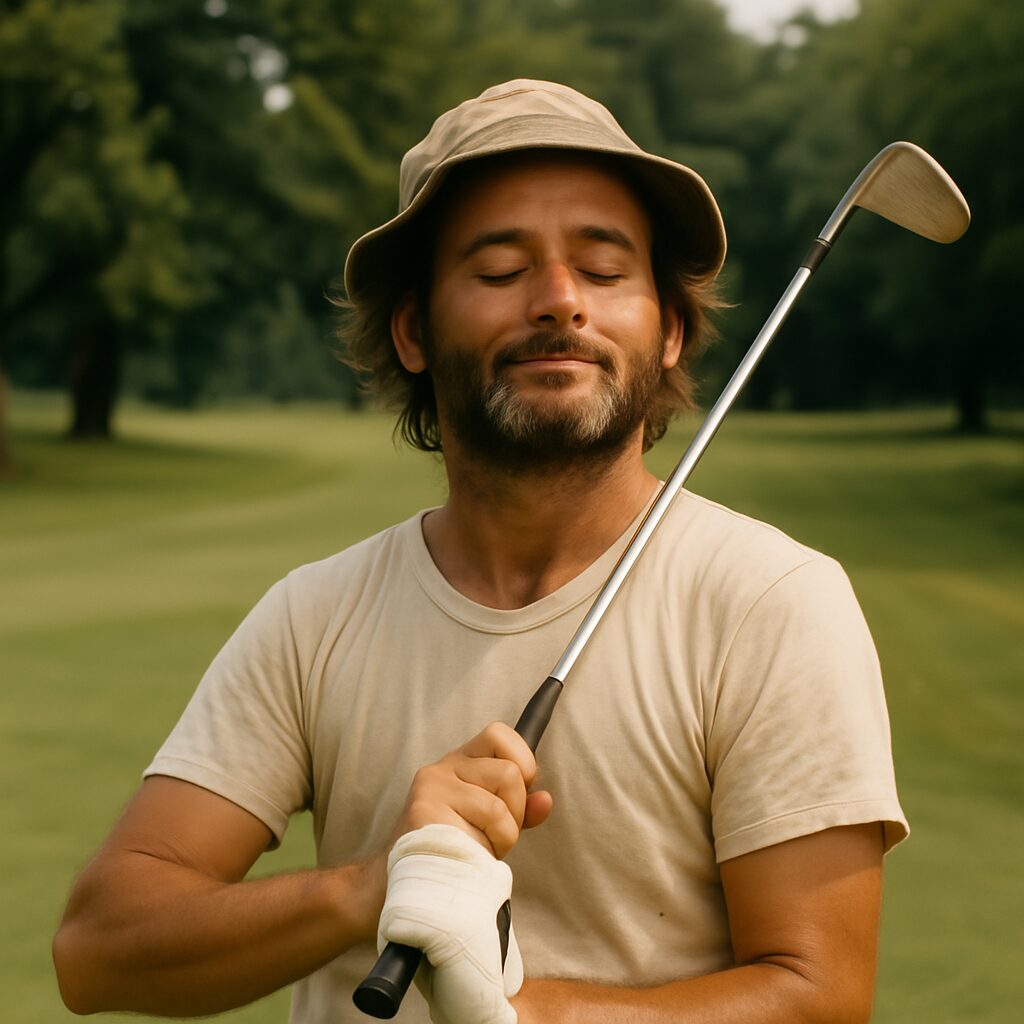
So, the next time you feel that familiar tremor of a shank brewing, don’t fight it. Let it flow. Let it be. For in the heart of every shank lies a lesson, a laugh, and perhaps, just perhaps, a path to a lower score you never saw coming. After all, as the great philosopher Basho once said, “A flute with no holes, is not a flute. A donut with no hole, is a Danish.” And a golf game without a shank? Well, that’s just not golf, is it?
-

 Product Review6 years ago
Product Review6 years agoThe Perfect Practice Putting Mat Review by Jason Tenzer
-

 Blog4 years ago
Blog4 years agoLoophole Rule Offers PGA Tour Pros a Mulligan
-

 Blog4 years ago
Blog4 years ago2021 Buyer’s Guide: The Top 10 Value Golf Balls For Distance & Feel
-

 Blog4 years ago
Blog4 years agoGolf Marriage Counselor
-

 Blog6 years ago
Blog6 years ago9 Biggest Chokes Of The Past Decade
-

 Product Review6 years ago
Product Review6 years agoTHE ADJUSTABLE IRONS: WALKING STICKS GOLF CLUBS
-

 Blog4 years ago
Blog4 years agoWhat Your Golf Clubs Say About You
-

 Equipment6 years ago
Equipment6 years agoOHK Sports Interview by Jason Tenzer



